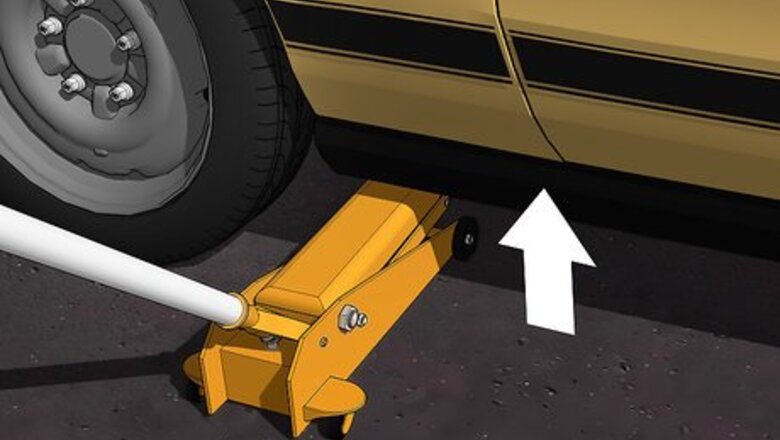
views
Mounting Wheel Covers on Your Wheels
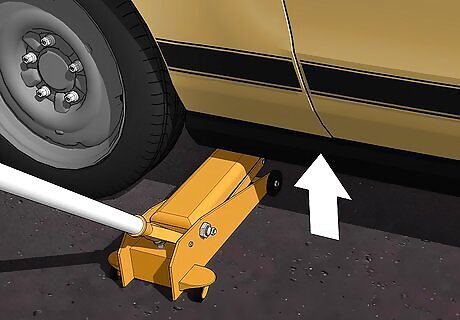
Jack up the vehicle. While some wheel covers can be installed without removing lug nuts, you may often find that the lug nuts on your wheel are intended to help hold the wheel cover in place. If need to remove the lug nuts on the wheel, first loosen the lug nuts, then jack the car up. Always jack your vehicle up on solid, level surfaces like blacktop or concrete. Place jack stands beneath the vehicle once you jack it up for safety.
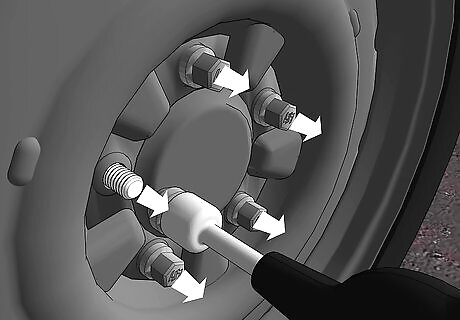
Remove the lug nuts. Use a tire iron or socket wrench to completely unscrew the lug nuts holding the wheel onto your vehicle. Set the lug nuts aside for you to use when mounting the wheel back onto the vehicle. Turn the lug nuts counter-clockwise to unscrew them. Be careful not to misplace any lug nuts. It is not safe to drive your vehicle with fewer than the provided amount of lug nuts.
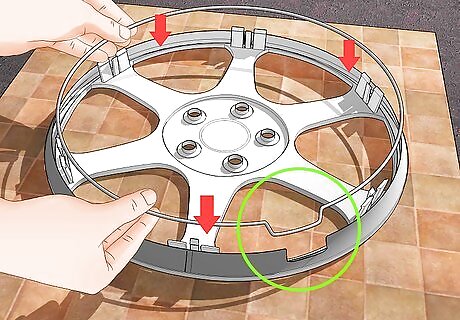
Line up the ring indent with the valve stem. The retention ring on the back of the wheel cover will have an indentation in it, as well as a hole through the wheel cover in the same area. This gap is intended to allow the valve stem to pass through the cover for you to access when adding air to your tires. Be sure to align the gap in the cover and retention ring with the valve stem so it can pass through. Many wheel covers will have a drawing of a valve stem on the back intended to help you identify where the valve stem passes through.
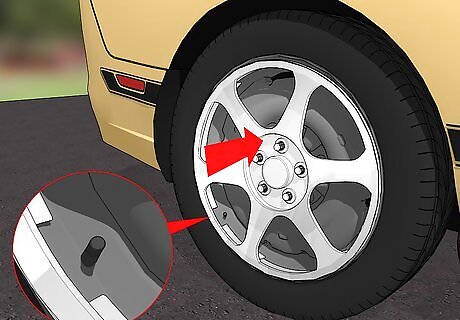
Press the wheel cover directly onto the wheel. With the valve stem properly aligned through the wheel cover, press the wheel cover directly onto the wheel. If you did not need to remove your lug nuts, the wheel cover should pop into place and not come back off the wheel easily. If you do not need to use lug nuts to secure the wheel cover, pull on it a bit to ensure it will not come off while driving. The wheel cover should not feel loose, nor should it be easily pulled off.
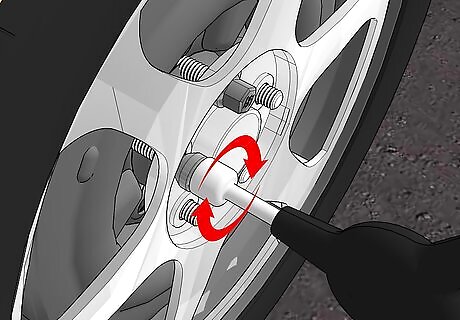
Screw on the lug nuts. If you removed the lug nuts previously, use your hands to thread each nut onto a lug stud passing through the wheel and wheel cover. Once you are confident the lug nuts are properly threaded, use a wrench or tire iron to tighten them. Be sure to re-tighten the lug nuts once you lower the vehicle down off of the jack. Be sure all lug nuts are tight before attempting to drive the vehicle.
Installing the Retention Ring
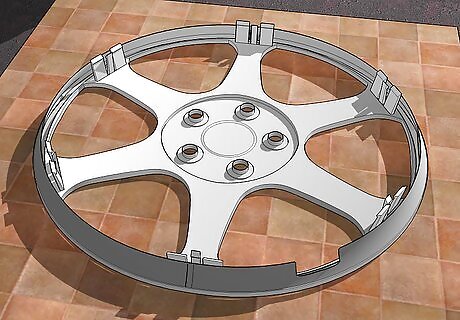
Place the wheel cover face down. If your wheel covers did not come with the retention rings installed, remove them from the packaging and place them face down on a surface that won’t scuff or damage their finish. You can place the wheel covers in grass or on a soft material like cloth or Styrofoam. Be sure you don’t move the wheel covers around as they lay face down to avoid scuffing or scratching them.
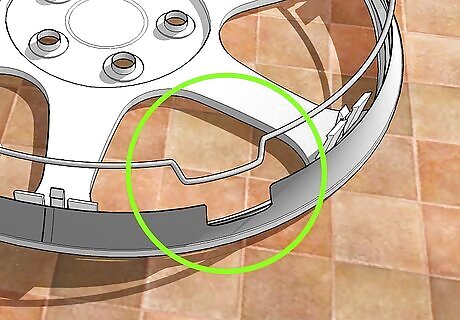
Line up the bend with the valve stem notch. The retention ring will have a bend in it designed to allow the valve stem to pass through it. Line that bend up with the hole in the wheel cover that is also intended for the valve stem to pass through. There will be only one bend in the ring, making it easy to identify the parts to line up. If the ring is not lined up properly, it will mount on the wheel cover, but will not be able to mount on the wheel itself.
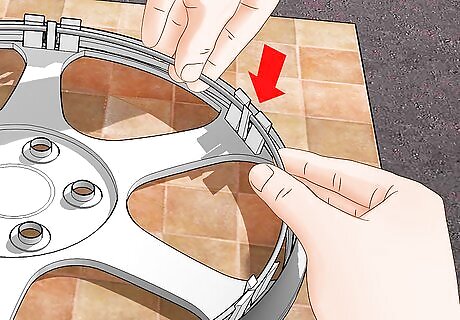
Press the metal ring downward onto the first few clips. Use your thumbs to press the ring down onto the clips that will hold it in place. Different wheel covers will have a different number of clips, but there are usually at least six. Simply pressing down on the ring will snap the clips into place. Continue to press the ring into each snap all the way around the wheel cover.
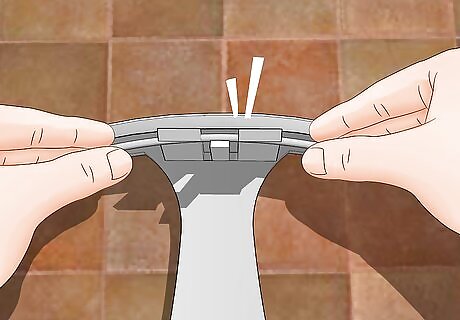
Bend the ring slightly to secure the last clips. It may seem as though the ring is too large for the wheel cover as you get to the final few clips. This is common, and likely does not indicate that there is any problem. Bend the ring slightly in order to clip it into the final few clips. Once the ring is in all of the clips it will redistribute the pressure and fit properly. If the ring is far too large to be clipped in, it may be the wrong ring for the size wheel cover.
Troubleshooting Problems with Wheel Covers

Verify the size of your wheels. If your wheel covers will not mount on the vehicle, it may be because the covers were made for a different sized wheel. Automotive wheels come in a wide variety of sizes that are usually measured in inches. Check the size of the wheel you have by locating the tire size printed on the tire. The last number in the tire size (such as P215/65 R15) is the number of inches the wheel is in diameter. Be sure the wheel cover you purchased is intended for that size wheel.
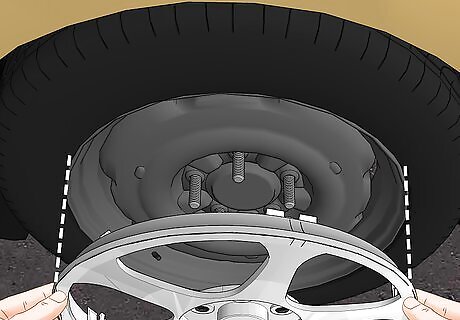
Assess whether or not a wheel cover can be installed. Some kinds of wheels cannot have wheel covers mounted on them because of their design. Often, decorative wheel designs do not permit the mounting of a wheel cover. If there isn’t a lip around the perimeter of the wheel, the wheel cover likely won’t mount. Look for a lip around the outside of the wheel for the retention ring to seat in. If there is no lip, wheel covers likely cannot be installed.
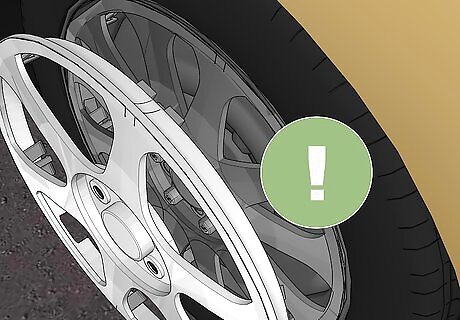
Ensure old wheel covers have been removed. If your new wheel cover will not seat properly on the wheel, be sure the old wheel cover has already been removed. Also check to see if the lug nuts are still in place, as many wheel covers are meant to be installed beneath lug nuts. Thin wheel covers that come from the factory may be difficult to distinguish from steel rims in some instances. Your new wheel covers may require the removal of lug nuts before they can be mounted.
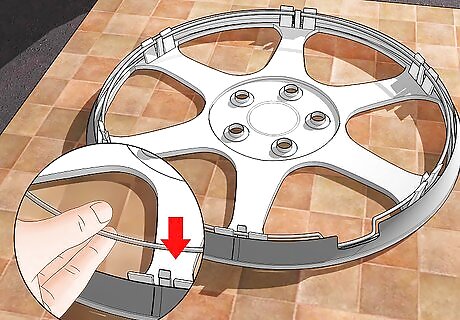
Make sure the retention ring is installed on new wheel covers. If the new wheel covers do not mount to your wheels, check to make sure the retention rings are installed properly on the underside of the covers. If the retention rings are not installed, you will need to install them prior to mounting the wheel covers. Most new wheel covers come with retention rings. If you do not have them, return to where you purchased the covers to get rings to mount them.


















Comments
0 comment